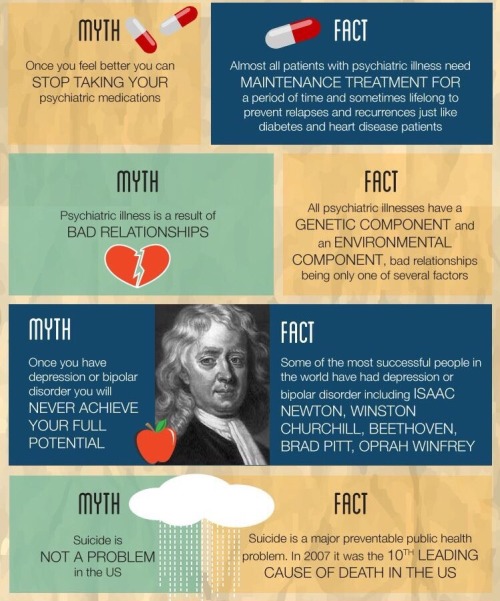A Cannabis Compound Has Been Proven For The First Time To Reduce The Frequency Of Seizures In People

A cannabis compound has been proven for the first time to reduce the frequency of seizures in people with a rare, severe form of epilepsy, according to the results of a randomized trial.
For years, parents have pointed to anecdotal benefits of cannabidiol (CBD), a compound in the marijuana plant that does not produce a high, saying it reduces seizures in treatment-resistant epilepsy.
Now doctors have performed a randomized trial to show cause and effect, with the findings published in Wednesday’s issue of the New England Journal of Medicine.
To conduct the study, the researchers focused on Dravet syndrome, a rare form of epilepsy that begins in infancy and is linked to a particular mutation that often resists combinations of up to 10 conventional seizure medications. They enrolled 120 patients who ranged in age from 2.5 to 18 years.
Sixty-one patients were randomly assigned to cannabidiol, and the 59 others to placebo. Neither the researchers nor the families knew who received the medication to prevent bias. All continued to take their existing medications.
“The message is that cannabidiol does work in reducing convulsing seizures in children with Dravet syndrome,” said lead author Dr. Orrin Devinksy, who is director of NYU’s Langone Comprehensive Epilepsy Center.
For those in the cannabinoid group, the median number of convulsive seizures per month dropped from 12.4 per month before treatment, to 5.9 seizures, the researchers reported.
The placebo group, in comparison, only saw their convulsive seizures fall from 14.9 per month, to 14.1.
Continue Reading.
More Posts from Karlfelersii and Others
Dreamland, the Power of Lucid Dreaming

Have you ever had the experience of wondering if what was happening to you was a dream or real? If so, you’ve likely experienced a lucid dream.
A lucid dream is a dream in which you know you are dreaming. During lucid dreaming, you can control the characters, the environment, the narrative, and the outcome of the dream.
Is it really a thing? It is. I have experienced a lucid dream, though, I didn’t know that’s what it was at the time. I didn’t realize I could lucid dream until I did some research as to what lucid dreaming was all about….
What is Lucid Dreaming?
Is it Really a ‘Thing’?
What Can You Get Out of It?
How do you do it?
▻ Read All About It Here ◅





Myths & Facts about Mental Illness
source: Global Medical Education
For more follow us @ Awake Society

The French Netflix uploaded this on twitter…….

This blog is Dedicated to anyone suffering from Anxiety! Please Follow Us if You Can Relate: ANXIETYPROBLEMS

Making Memories While You Sleep
Researchers have long known that the brain produces specific rhythms during sleep, and that different parts of the brain produce different rhythms. We also know that sleep is important for memory. In a recent study published in Nature Communications, UC San Diego School of Medicine researchers bridged the gap between these two schools of research — investigating how the timing of sleeping brain rhythms may influence memory storage.
The research team was led by Eric Halgren, PhD, professor of neurosciences, psychiatry and radiology, and Rachel Mak-McCully, PhD, who was a graduate student in Halgren’s lab at the time of the study. They recorded sleeping rhythms from two regions of the brain — cortex and thalamus — in three people with epilepsy who had electrodes implanted in their brains as part of their treatment.
The thalamus is a relay station for all senses except smell. This part of the brain is considered the “pacemaker” of the sleep spindle, intermittent clusters of brain waves that group cortical activity and strengthen the connections between cortical neurons that form memories. The cortex is where memories are stored permanently, and it’s known to generate slow waves during sleep.
The researchers found how the cortex and thalamus work together to time slow waves and spindles in a sequence that may optimize memory formation.
“During sleep, we usually think of the thalamus as having one conversation while the cortex is having another,” Mak-McCully said. “But what we found is they are actually having a discussion that’s important for memory retention.”
The information the team collected on rhythm timing and coordination between these two areas is important because it allows them to begin thinking about how altering those rhythms could change memory storage. The ultimate goal, Mak-McCully said, is to find ways to manipulate these sleeping brain rhythms as a means to improve, or at least maintain, memory as we age.
“It’s not just that we need more of these rhythms, we need to know when they do what they do, and for how long,” she said.
Pictured: Cartoon of the communication loop described in this study: 1) downstates in the cortex lead to 2) downstates in the thalamus, which produces a spindle that 3) is sent back to the cortex.
Stay Focused, If You Can
What makes some people better able to resist temptation than others? Lucina Uddin and Jason Nomi, cognitive neuroscientists at the University of Miami College of Arts and Sciences collaborated with Rosa Steimke, a visiting postdoctoral researcher in the Brain Connectivity and Cognition Laboratory at UM, to explore this question.

Steimke conducted a study as part of her dissertation work at Charité University in Berlin, Germany, in which participants were asked to perform a simple task: focus on one side of a screen where a letter – either an “E” or “F” – would quickly appear then disappear, and press a button indicating which letter they saw.
But before the letter appeared on the screen, an image would pop up to the right, and—this is where it gets interesting—the images were quite sensual and erotic. Not surprisingly, participants’ eyes definitely wandered to the right for a quick peek, which was captured by eye-tracking equipment.
“Using this setup, we were able to challenge participants’ self-control in the face of temptation,” said Steimke.
Adds Uddin, “This study is about individual differences in the ability to control impulses and behavior.”
According to previous research, the brain’s “cognitive control network” is typically involved in behavior that requires self-control. Here, the researchers explored another potential candidate brain system known as the “salience network.” The salience network is a collection of regions in the brain that selects which stimuli are deserving of our attention, such as a driver responding to a pedestrian running across the street or a large billboard along the highway.
The cognitive control network is related to ‘’top-down’’ effortful control of attention while the salience network is related to ‘’bottom-up’’ automatic direction of attention.
“We were interested in comparing the roles of these two networks in self-control behavior,” said Nomi.
Uddin and her team have taken a new approach to studying brain activity and its moment-to-moment variations using a method called “dynamic functional network connectivity.” Using this method, the team was able to examine whether the cognitive control or salience network was more closely linked to participants’ tendency to glance at the sensual pictures when they knew the goal was to focus on the letter.
Surprisingly, they found no links between cognitive control network dynamics and individual differences in performance of the task. However, those individuals whose brains showed a specific pattern of salience network dynamics were better able to perform the task. Specifically, for some people their salience networks were not as well-connected with the visual networks in the brain. Individuals who showed this pattern were better able to resist tempting distractors and perform the task.
“Researchers normally study connectivity using traditional approaches, but we used the dynamic approach, which gave us new insight that traditional connectivity analysis did not reveal,” said Uddin. “When we looked at the moment-to-moment, dynamic measures of connectivity we saw the relationship with individual differences in eye-gazing behavior emerge.”
The study, “Salience network dynamics underlying successful resistance of temptation,” is published in the journal SCAN.

Making A.I. Systems that See the World as Humans Do
A Northwestern University team developed a new computational model that performs at human levels on a standard intelligence test. This work is an important step toward making artificial intelligence systems that see and understand the world as humans do.
“The model performs in the 75th percentile for American adults, making it better than average,” said Northwestern Engineering’s Ken Forbus. “The problems that are hard for people are also hard for the model, providing additional evidence that its operation is capturing some important properties of human cognition.”
The new computational model is built on CogSketch, an artificial intelligence platform previously developed in Forbus’ laboratory. The platform has the ability to solve visual problems and understand sketches in order to give immediate, interactive feedback. CogSketch also incorporates a computational model of analogy, based on Northwestern psychology professor Dedre Gentner’s structure-mapping theory. (Gentner received the 2016 David E. Rumelhart Prize for her work on this theory.)
Forbus, Walter P. Murphy Professor of Electrical Engineering and Computer Science at Northwestern’s McCormick School of Engineering, developed the model with Andrew Lovett, a former Northwestern postdoctoral researcher in psychology. Their research was published online this month in the journal Psychological Review.
The ability to solve complex visual problems is one of the hallmarks of human intelligence. Developing artificial intelligence systems that have this ability not only provides new evidence for the importance of symbolic representations and analogy in visual reasoning, but it could potentially shrink the gap between computer and human cognition.

(Image caption: An example question from the Raven’s Progressive Matrices standardized test. The test taker should choose answer D because the relationships between it and the other elements in the bottom row are most similar to the relationships between the elements of the top rows)
While Forbus and Lovett’s system can be used to model general visual problem-solving phenomena, they specifically tested it on Raven’s Progressive Matrices, a nonverbal standardized test that measures abstract reasoning. All of the test’s problems consist of a matrix with one image missing. The test taker is given six to eight choices with which to best complete the matrix. Forbus and Lovett’s computational model performed better than the average American.
“The Raven’s test is the best existing predictor of what psychologists call ‘fluid intelligence, or the general ability to think abstractly, reason, identify patterns, solve problems, and discern relationships,’” said Lovett, now a researcher at the US Naval Research Laboratory. “Our results suggest that the ability to flexibly use relational representations, comparing and reinterpreting them, is important for fluid intelligence.”
The ability to use and understand sophisticated relational representations is a key to higher-order cognition. Relational representations connect entities and ideas such as “the clock is above the door” or “pressure differences cause water to flow.” These types of comparisons are crucial for making and understanding analogies, which humans use to solve problems, weigh moral dilemmas, and describe the world around them.
“Most artificial intelligence research today concerning vision focuses on recognition, or labeling what is in a scene rather than reasoning about it,” Forbus said. “But recognition is only useful if it supports subsequent reasoning. Our research provides an important step toward understanding visual reasoning more broadly.”








-
 artemisarticles reblogged this · 4 years ago
artemisarticles reblogged this · 4 years ago -
 lepetitereina reblogged this · 7 years ago
lepetitereina reblogged this · 7 years ago -
 calicotomcat reblogged this · 7 years ago
calicotomcat reblogged this · 7 years ago -
 wibblywobblygenderywendery liked this · 7 years ago
wibblywobblygenderywendery liked this · 7 years ago -
 47catsinatrenchcoat reblogged this · 7 years ago
47catsinatrenchcoat reblogged this · 7 years ago -
 47catsinatrenchcoat liked this · 7 years ago
47catsinatrenchcoat liked this · 7 years ago -
 realisticflyinglesbian reblogged this · 7 years ago
realisticflyinglesbian reblogged this · 7 years ago -
 realisticflyinglesbian liked this · 7 years ago
realisticflyinglesbian liked this · 7 years ago -
 joaquimol-blog-blog liked this · 7 years ago
joaquimol-blog-blog liked this · 7 years ago -
 rat---king reblogged this · 7 years ago
rat---king reblogged this · 7 years ago -
 tertiarybutterfly reblogged this · 7 years ago
tertiarybutterfly reblogged this · 7 years ago -
 chocolateismynemesis reblogged this · 7 years ago
chocolateismynemesis reblogged this · 7 years ago -
 ironlightmoon-blog reblogged this · 7 years ago
ironlightmoon-blog reblogged this · 7 years ago -
 ironlightmoon-blog liked this · 7 years ago
ironlightmoon-blog liked this · 7 years ago -
 gatorpegster liked this · 7 years ago
gatorpegster liked this · 7 years ago -
 realcleverscience liked this · 7 years ago
realcleverscience liked this · 7 years ago -
 indyjason69 reblogged this · 7 years ago
indyjason69 reblogged this · 7 years ago -
 osseouscrown reblogged this · 7 years ago
osseouscrown reblogged this · 7 years ago -
 fer195 reblogged this · 7 years ago
fer195 reblogged this · 7 years ago -
 fer195 liked this · 7 years ago
fer195 liked this · 7 years ago -
 advocake liked this · 7 years ago
advocake liked this · 7 years ago -
 mm-imagerie reblogged this · 7 years ago
mm-imagerie reblogged this · 7 years ago -
 relatabletoaster liked this · 7 years ago
relatabletoaster liked this · 7 years ago -
 arianrhodswheel reblogged this · 7 years ago
arianrhodswheel reblogged this · 7 years ago -
 grummmdidley liked this · 7 years ago
grummmdidley liked this · 7 years ago -
 ulddat reblogged this · 7 years ago
ulddat reblogged this · 7 years ago -
 mewttie liked this · 7 years ago
mewttie liked this · 7 years ago -
 humongousalpacawizard-blog liked this · 7 years ago
humongousalpacawizard-blog liked this · 7 years ago -
 snapurbia-blog liked this · 7 years ago
snapurbia-blog liked this · 7 years ago -
 malflores liked this · 7 years ago
malflores liked this · 7 years ago -
 asexualgoth reblogged this · 7 years ago
asexualgoth reblogged this · 7 years ago -
 asexualgoth liked this · 7 years ago
asexualgoth liked this · 7 years ago -
 liobits reblogged this · 7 years ago
liobits reblogged this · 7 years ago -
 passionville reblogged this · 7 years ago
passionville reblogged this · 7 years ago -
 devourer-of-acetone reblogged this · 7 years ago
devourer-of-acetone reblogged this · 7 years ago -
 soundfanatic liked this · 7 years ago
soundfanatic liked this · 7 years ago
